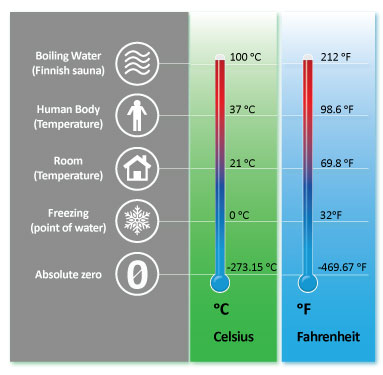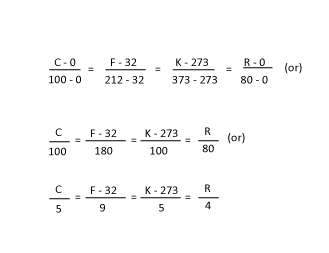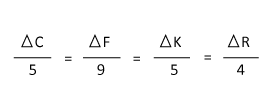
The construction of a thermometer depends on some physical property of matter (such as pressure, volume, emf, resistance etc) that changes with temperature.
The fixed points are (the ice point) the temperature of the melting point of ice and (the steam point) the temperature of the boiling point of water under normal atmospheric pressure.
The distance between the LFP and UFP of a thermometer is called the fundamental interval.
The fundamental interval is divided into equal parts. These parts are given arbitary numerical values of temperature known as the thermometric scale.

Different Thermometric Scales:
| Thermometric scale | LFP | UFP | Total No. of divisions |
| Celsius scale | 0°C | 100°C | 100 |
| Fahrenheit scale | 32°F | 212°F | 180 |
| Kelvin scale (or) Absolute scale | 273.15K | 373.15K | 100 |
| Reaumur scale | 0°R | 80°R | 80 |
 =
constant
=
constant =
constant
=
constant


The temperature of the core of the sun is 107K while its surface is 6000K. The normal temperature of the human body is 310.15K (= 37°C = 98.6°F) while NTP implies 273.15K (= 0°C = 32°F).